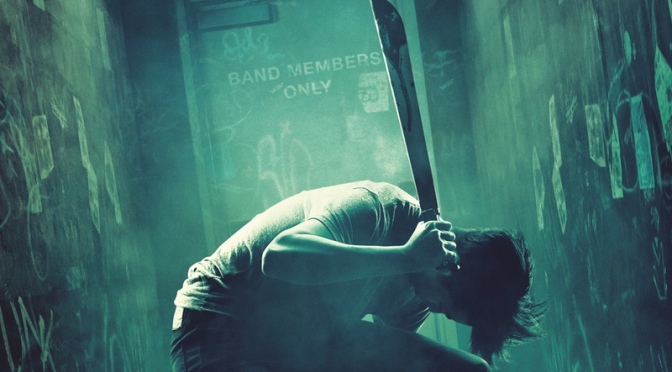Rose Heredia
Contributing Writer
In a cinematic landscape filled with thrillers and horror films, “Green Room” tries to combine the war genre film with the punk rock scene mostly through aesthetic filmmaking techniques. During the film, I was on the edge of my seat, but not for the reasons one would think. While using punk rock as a background was interesting, I wondered what exactly this film is doing that hasn’t been done before?
The Ain’t Rights, a punk rock band, unwittingly end up in this Neo-Nazi dive bar because their promoter messed up. They kick off their set with a Dead Kennedys cover of “Nazi Punks F*** Off” and through slow motion, the crowd moshes and the rest of their set flows until they return to the green room on their way out. When the band’s bassist, Pat (Anton Yelchin), witnesses a murder, the stakes are raised and the band’s survival is on the line. Will they make it out of there alive?
Visually, the way director Jeremy Saulnier and his cinematographer, Sean Porter, made this film look and move was stunning, especially the landscape shots, brimming with autumnal green and orange colors and the dark, dank, underlit scenes in the club. The first time we meet Darcy (Patrick Stewart), the leader of the white supremacists, we hear his gravelly voice first and then his no-nonsense delivery of instructions with precision regarding The Ain’t Rights’ fate. Stewart is spectacular as Darcy. Normally seen as a regal captain of authority in his roles as Professor X in the X-Men films and Captain Jean-Luc Picard in Star Trek: The Next Generation, we trust that he’ll steer his crew in the right direction, with discipline and dignity. In “Green Room,” Stewart takes that energy to the opposite side of the spectrum, with his cold, menacing, and calm demeanor to have his followers incite fear using dogs, machetes, and guns.
Pat, from the beginning of the film, serves as our emotional core, and we know we’ll be following him in this war against the skinheads for survival. Amber (Imogen Poots), a friend of the deceased, is a character that always keeps you guessing right up until the end, which made me want more of her.
As a genre picture trying to be more than a genre picture, this film manages to work cinematically. Its core message, however, wasn’t as clear. This film served as simple escapist entertainment, which is fine, but there could have been more. Jeremy Saulnier used “Straw Dogs” (the violent, home-intruder classic from 1971) as a cinematic template to tell this story. “Straw Dogs” was light on plot but huge on creating a visceral reaction in its viewers; it came out in the seventies when exploitation cinema was still rampant.
The exploitation film still exists, but without the extremity. When I was watching “Green Room”, I had the same thought I had after watching Wes Craven’s “The Last House on the Left”: I need a hug and a shower. Mostly the hug.
But “The Last House on the Left” was subversive; it was about talking about youth and the Vietnam War (like a lot films from that decade). What’s the subversive message that we are supposed to take from “Green Room”? In a recent interview, Saulnier mentioned how he approached this movie like a war film. Except, again, where’s the message? At the end, we’re left with a visually stunning thriller that leaves you feeling spent and empty.
So watch if you want to see a punk rock-themed thriller. You might enjoy this. For everyone else, go watch a George Romero flick (any of them).
Rating: 3 out of 5
Photo courtesy of A24

